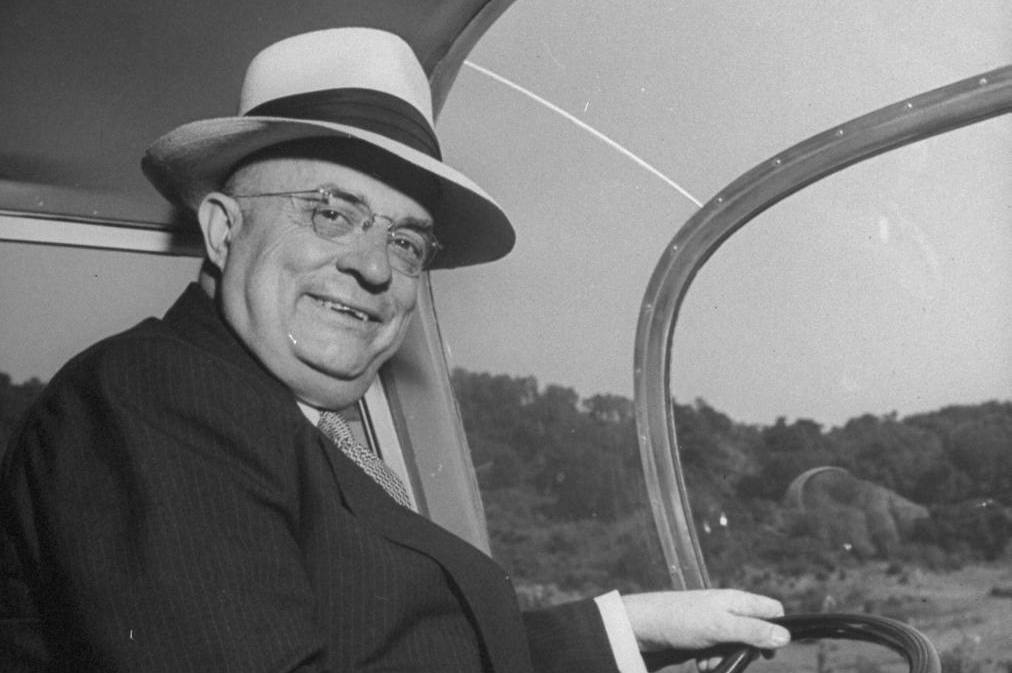Henry Kaiser. The name probably rings a bell, right? But why? For those of you who don’t know the significance behind this name, here is a brief history lesson on a man who was extremely noteworthy in Hawaii, and largely recognized as the most powerful businessman in the US of the era. Henry Kaiser might be one of the most forgotten entrepreneurs of our time, so let’s recap on this man’s incredible legacy! I think you will be quite surprised…
Born in New York in 1882, Henry seemed destined for a life of hard work and dedication. At age 13, he left school to join the workforce (not because he had to help support his family, but because he was eager to have a job!), and by the age of 31 he formed his first construction company in Oakland, California. Obviously there were a lot of other jobs that got him from point A to point B, (like moving out West to prove to his future father-in-law that he could support his daughter and intended wife, Bess Fosburgh), but this early stuff can be read in the online Encyclopedia.
Anyways, Henry’s background in road-paving later led him to work on projects such as the Hoover Dam, Grand Coulee Dam, the Bay Bridge in San Francisco, the world’s largest cement plant, (Permanente Cement, south of San Francisco), World War II shipbuilding yards and even a highway across Cuba that crossed over swamp lands and included 500 bridges.
Eager to expand and succeed, Henry visited Hawaii in 1930 and was intrigued by the local business opportunities. With knowledge in building highways, dams, bridges, ships and cars, the man was eager to grow his empire and the Hawaiian Islands were just becoming a destination for American travel.
Mr. Kaiser’s first endeavor in Hawaii finally came about in 1940, when he started a business that shipped cement from his plant in San Francisco out to Hawaii. Eventually, Mr. Kaiser decided it was more economical to build a cement plant in Hawaii, so in 1958 he built one in Campbell Industrial Park in Kapolei, which is now the largest industrial park in the Hawaii.
Aside from the industrial side of Henry’s accomplishments, he is also recognized for establishing the Kaiser Permanente and the Kaiser Foundation Medical Center and clinics, founding and supporting TV and radio stations and building the Hawaii Kai neighborhood.
In 1961, Hawaii Kai was a 521-acre fishpond with little to no development on its land. Henry Kaiser bought this property from the Bernice Pauahi Bishop Estate and developed the residential tracts that exist today, complete with the marina and channels to the ocean. There is even a high school within the Hawaii Kai neighborhood that is named after its founder, Henry J. Kaiser High.
As if all that weren’t enough, the man is also credited to popularizing the Jeep. In 1953, Henry bought Willys Overland, an Ohio-based American automobile company that was known for their military and civilian Jeeps during the 20th century, and capitalized on American’s fascination with the Jeep. Willys Overland quickly became Kaiser Jeep Corporation and by 1966, Kaiser was building sports and compact cars, station wagons, and the Jeep Wagoneer, which some say was America’s first SUV.
But one of Kaiser’s proudest achievements of the later ‘30s and ‘40s was his medical care plan, which he started in 1942 exclusively for employees working on the Grand Coulee Dam. After the war ended, Henry made the health care plan open to the public, and it quickly grew to become the nation’s largest health organization. With 1.5 million members and 19 hospitals specializing in preventative health care around the country by 1967, the Kaiser Foundation Medical Center and clinics became a model for federal health care programs. Today, Hawaii has 18 Kaiser Permanente clinics, 10 of which are on Oahu.
In the year 1954, Henry was semi retired in Hawaii but also in the process of building a large resort and cement factory. After developing it, he later sold this property in 1961 to Hilton for over $21 million, and the resort became the Hilton Hawaiian Village. During this time, Mr. Kaiser also sponsored radio and television programs, including the popular television series Maverick. He outlived his wife and remarried, but passed away in August of 1967 in Honolulu. He is buried in Mountain View Cemetery in Oakland, California and his legacy runs deep in American history.
Henry’s life in Hawaii was grand, as he and his wife lived on a gigantic estate along the waterfront development of Hawaii Kai in Portlock. The property included a pink mansion, two circular houses for Mrs. Kaiser’s pink poodles, a greenhouse for her pink roses and the only private boat harbor and dock on the island. The Kaisers were known for hosting numerous celebrities including Bob Hope. Henry Kaiser also had a personal relationship with President Franklin D. Roosevelt, so much that Roosevelt even considered naming Kaiser as his running mate for the 1944 presidential elections.
It was discovered in a public poll conducted in the spring of 1945 that Kaiser was believed to be the US civilian who had done the most to help win the war. A 1946 public poll also named Henry Kaiser a strong prospect for U.S. president, although this never happened. But even more impressively, the man founded over 100 companies and is considered the most powerful businessman in the U.S. West during World War II. The mark Henry left in Hawaii and on America is monumental. So now you know!
If you’re interested in learning more about Henry J. Kaiser and his early life and later endeavors, check out the online encyclopedia here https://www.encyclopedia.com/topic/Henry_John_Kaiser.aspx




